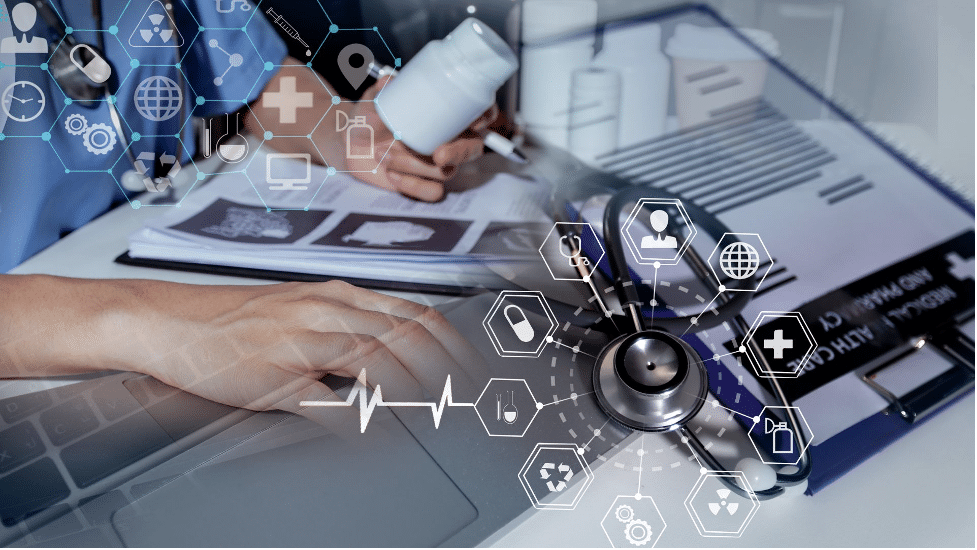Advances in artificial intelligence and fiber optic interferometer technology have paved the way for revolutionary security solutions in stadiums, banks, schools, critical infrastructure, and various industries.
In the area of healthcare, Huvr takes the capabilities of these technologies further. In addition to keeping hospital staff and patients safe, Huvr’s cutting-edge technology enhances patient outcomes and streamlines healthcare operations. Its real-time data, improved communication, and optimized workflows are transforming patient care and hospital efficiency.
Real-time data for improved patient monitoring and response times
Traditional patient monitoring techniques often involve periodic checks. However, when a hospital’s staff covers many patients, it leaves significant gaps where potential complications can go unnoticed. Huvr transforms this scenario by offering continuous monitoring.
Real-time data is a game-changer in patient monitoring and response times. Huvr’s OpticSense system employs a fiber optic ring interferometer along with other sensors, such as high-resolution cameras, to turn the hospital’s physical structure into a highly sensitive monitoring device. This technology, initially used to identify suspicious activity, can be adapted for healthcare environments to monitor patients.
The hyper-sensitive fiber optic loop detects minute disturbances, like a patient’s groan, slight movement, or subtle changes in their environment. When it detects something unusual, Huvr’s AI immediately directs cameras to collect video footage. In seconds, it analyzes the data and gives healthcare providers actionable insights in the form of a detailed text message. For healthcare providers, this means a quicker and more accurate understanding of a patient’s condition.
Speedy intervention is often the difference between life and death in critical care scenarios. Consider a patient who experiences a sudden cardiac event or a critical change in their vitals. The system notifies healthcare providers within seconds, enhancing response times and potentially saving lives. By providing real-time data, Huvr’s technology allows doctors and nurses to respond to emergencies quickly and efficiently.
Facilitating better communication between healthcare providers and patients
Effective communication is vital in healthcare. Miscommunication can lead to severe consequences, from incorrect diagnoses to delayed treatments. Huvr’s technology redefines this landscape by transforming traditional patient monitoring systems into highly interactive tools.
In a hospital setting, Huvr’s team works with providers to customize the technology to their specific needs. They program the AI to monitor for specific keywords and sounds, such as “help” or “pain,” as well as for non-audible patient movements. Upon detection, it sends an alert directly to the nursing staff or on-call physician. This direct line of communication ensures that patient needs are addressed promptly, fostering a more responsive and attentive healthcare environment.
Besides sound, visual data capture enhances communication by contextualizing the situation. In the context of hospital security, the system can provide detailed descriptions of suspected intruders and where they are going and report details about their car and license plate if they leave the premises. In terms of patient care, this monitoring translates to an in-depth, immediate understanding of a patient’s physical state and environment, allowing for prompt and accurate responses to their needs.
The system’s real-time data is not just for immediate responses but also continuous care. Collected data can be securely shared among healthcare providers, ensuring everyone caring for a particular patient has comprehensive, up-to-date information. This seamless communication enhances collaborative care, reducing the chances of errors and improving patient outcomes.
Huvr is optimizing workflows, reducing errors, and enhancing efficiency in hospitals
Huvr’s technology streamlines hospital operations by optimizing workflows, reducing errors, and enhancing overall efficiency. The AI-driven system accomplishes this by prioritizing alerts based on the severity of the anomalies it detects.
In a bustling hospital environment, not every blip on the radar warrants immediate attention. Huvr’s machine learning algorithms categorize anomalies into low, medium, or high priority, ensuring that healthcare providers focus their attention where it is needed most. This prioritization assists in establishing a more effective workflow, allowing staff to act swiftly and without unnecessary distractions. It reduces wait times and ensures that resources are utilized effectively.
Huvr’s technology also has streamlined installation and operational features that make it practical for healthcare settings. For instance, the small device can connect to a hospital’s existing camera systems. Additionally, the system is designed to be operational around the clock, with backups such as battery power and solar options, ensuring it remains active during power outages or other disruptions. This reliability is crucial for healthcare facilities, where uninterrupted monitoring and data availability directly impact patient safety and care quality.
Furthermore, Huvr’s technology is scalable and cost-effective, making it accessible to a range of healthcare providers. Whether a large hospital network or a small clinic, the technology can be adapted to meet specific needs without exorbitant investments. This allows institutions of varying sizes to implement advanced monitoring and workflow optimization solutions, democratizing access to high-tech healthcare improvements.
Advanced data analytics, AI, and fiber optics are moving beyond security to meet the critical needs of the healthcare industry. By offering real-time data to improve patient monitoring and response times, facilitating enhanced communication between healthcare providers and patients, and optimizing workflows to reduce errors and boost efficiency, Huvr demonstrates a profound potential to revolutionize healthcare. In a field where time is critical and precision is paramount, integrating Huvr’s technology could very well be the key to the next significant leap in healthcare services.
